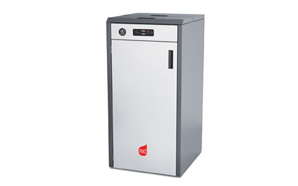

Jed Smith discusses whether or not we really need the Renewable Heat Incentive to sell-in renewables against fossil-fuel alternatives
The renewables sector continues to grow, develop and offer innovative solutions. It is certainly one of the most exciting markets this country has seen for many years. With the launch of the domestic Renewable Heat Incentive (RHI), the government has clearly indicated the economic importance of renewables. Why, though, have we been waiting for the RHI to open the flood gates and engage the vast majority of consumers?
Thousands of householders will testify that you don’t need the RHI to realise the benefits for renewable technologies against some of the fossil-fuel options. Aside from reducing your carbon footprint, securing your fuel supply and preserving the environment for generations to come, is there a benefit when it comes to cost?
The average oil-fuelled three-bedroom detached house in the UK uses, conservatively, 2,000 litres of oil each year, costing £1,260*. Meanwhile the equivalent usage on wood pellet biomass boilers would be 20,000kwh x 4.8p/kwh* coming to £960; an annual saving of £300.
When considering the use of renewable technologies, it’s vital to think longer term and take into account the lifetime span of the appliance. The capital costs over the lifetime of a biomass boiler are not dissimilar to those of replacing oil boilers. In the examples given in tables 1 and 2, the cost of the oil boiler over 15 years is £26,025, and the cost of the biomass equivalent would be £23,950. When taking into account the annual saving of £300 for the wood pellet, adding this in to the capital saving, this equates to a total saving of £2,075 over the 15-year period against the cost of the oil boiler.
There has also been no account taken of the rate at which fossil fuel prices are increasing and, realistically, it should be assumed the cost will continue to rise above inflation each year. Also, the RHI has been removed from the argument which, in reality, would give an additional saving with regard to the biomass system.
Is it possible for those consumers with perfectly adequate traditional heating schemes to integrate renewable energy sources, to improve efficiency and reduce cost? Again, the answer is ‘yes’. If you already have an existing oil or gas boiler and your house is well insulated, you could easily add solar thermal, heat pump and pellet stove technology, which could all be integrated into a multi-fuel thermal store such as a HEATBANK Xcel. The system could then be configured so it uses the most efficient heat source at the lowest cost to the customer.
The thermal store allows multi-fuelled systems to be connected at one source. This allows for more flexibility over fuel options, as it uses the energy generated through renewables and only calls on fossil fuels as and when required. Overall, there are good savings to be made by the customer and, in turn, more work to be carried out by the installer.
The number of biomass installers has increased considerably over the last 12 months. There has also been a steady rise in the number of traditional solid-fuel engineers and plumbing and heating engineers working within the renewable sector.
There is no doubt the opportunities for installers to grow their businesses are there for the taking and success will come for those that have the ability to explain the benefits of installing renewable heat products, both as an alternative option and as a complement to the traditional fossil fuel systems.
Jed Smith is head of business support services at Specflue
If you'd like to keep up-to-date with the latest developments in the heating and plumbing industry, why not subscribe to our weekly newsletters? Just click the button below and you can ensure all the latest industry news and new product information lands in your inbox every week.